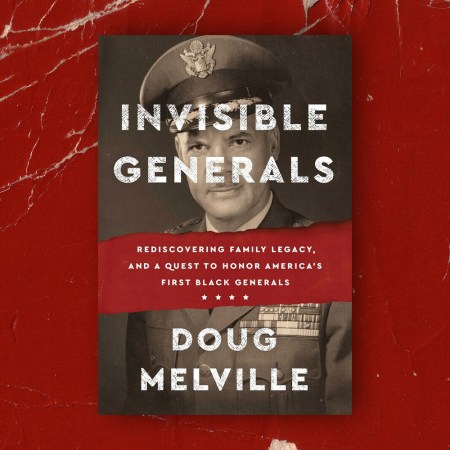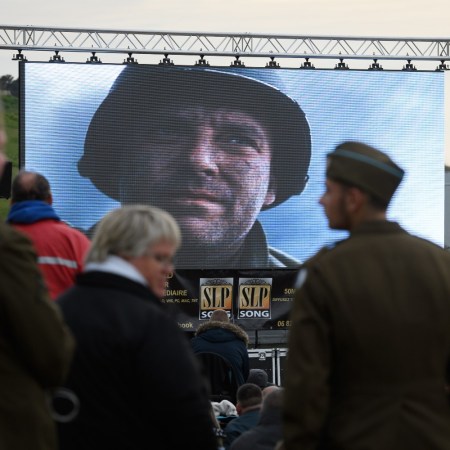A madman wants to take over the world and/or destroy it. A group of people must ignore their differences long enough to defeat him. In superhero films, this happens all the time. In history, it’s happily rare. But this is what occurred on November 28, 1943 when U.S. President Franklin Delano Roosevelt, British Prime Minister Winston Churchill, and the Soviet Union’s General Secretary Joseph Stalin gathered for the Tehran Conference.
Of course, the Allies ultimately triumphed—both Germany and Japan surrendered within two years of this meeting. Knowing the outcome, it’s easy to focus on Tehran mostly in terms of being a preview of the Big Three’s Yalta and Potsdam conferences in 1945 that shaped the postwar order. Victory in World War II seems already a foregone conclusion.
This is a mistake. We need to remember how close both Britain and the U.S.S.R. came to collapse. We must keep in mind that even when it was clear that Germany wouldn’t win, it didn’t mean they would lose any time soon. And we can never forget just how massive Hitler’s crimes against humanity were, nor should we ignore that to the very end he was eager to commit more. With the help of Chuck Thompson—author of The 25 Best World War II Sites: European Theater and The 25 Best World War II Sites: Pacific Theater—this is a reminder of how high the stakes were. As Thompson puts it, “Let’s go back to how differently things might have happened.”
Making Slaughter a Science
Mankind has always gone to war. In the twentieth century, however, it became possible to kill in ways earlier generations never imagined. World War I’s innovations included machine guns, tanks, submarines, planes, and chemical warfare. By the time World War II rolled around, they were more sophisticated—more lethal. History is filled with ambitious generals who attack distant lands. Hannibal became a legend when he and his elephants crossed the Alps into Italy in just 16 days. Now planes made it possible to fly over them entirely and massacre one’s enemies without ever touching the ground.
This is to say that if Adolf Hitler came to power during an earlier century, his atrocities would have been on a lesser scale. World War II was a uniquely horrific moment for him to be in control. In the past, the Nazi blitzkrieg would have been far slower and less devastating. Germany wound up surging both West and East, far too often overrunning all they encountered. This was a conflict that drew in the bulk of the planet, with heavy combat on all three of the world’s most populous continents: Europe, Asia, and Africa.
Of course, ultimately the Nazi advance was stopped. Indeed, they were driven back and defeated completely. Yet their downfall was hardly certain. When discussing why Germany ultimately lost the war, Thompson cites three key factors.
The first: “Soviet troops.”
The second: “American production.”
The third: “Crazy luck and fortune.”
Britain Barely Hanging On
“In hindsight, I can’t believe how close we were to letting England fall under Nazi control,” Thompson says. In particular, he cites the Battle of Britain in 1940. This aerial combat lasted for months as Germany attempted to establish air superiority before an actual invasion. Even the most patriotic British bettor might have hesitated to put his chip on Dear Old Blighty. After all, the Nazis had more aircraft and pilots with combat experience, having already swept across Europe. Beyond this, the U.S. offered limited assistance—it was still over a year away from Pearl Harbor officially putting an end to neutrality. (Thompson says his research found that help did come from other, often surprising places, notably “one pilot each from Jamaica and Palestine.”)
Yet Britain managed to come out on top. How? Thompson puts much of the blame on German leadership. The Luftwaffe was headed by Hermann Göring. Thompson calls him a man stuck in the past, thinking of his days as an ace “open cockpit World War I pilot.” Consequently, he was dismissive of radar. Happily, the British were not.
If Germany had triumphed, Thompson points out the Royal Air Force would have been unable to bomb a German invasion. What would that potentially mean for the Nazis? “Let’s say they just take a southern beachhead and hold it. Where does the D-Day invasion launch from? How does D-Day happen?”
And it wasn’t only in the West that Thompson found fortuitous breaks.
The Soviets Staggered
Thompson notes that the Nazis came unnervingly close to establishing a permanent foothold on the Eastern Front. Germany had correctly recognized that the Soviet Union was surprisingly vulnerable. Indeed, Stalin seemed to be inviting an invasion. Beyond putting a bit more stock in the German-Soviet Nonaggression Pact than Hitler did, Stalin actually inflicted heavy casualties on his own military. More worried about internal threats than external ones, Thompson observes he “purged 3/4 of the Red Army’s senior officers in 1937 and 1938.”
Sure enough, the initial advance was unsettlingly successful: “At one point, the Nazis held half of the Soviet Union in terms of population and production” (though not land). But again there were miscalculations by German leadership. Thompson feels Hitler’s decision to split his forces in 1942 was a massive error. Similarly, Germany had failed to prepare for an unusually harsh Russian winter. They found themselves overwhelmed by an unexpected foe: Frostbite. Reportedly, German troops had a total of nearly 15,000 limbs amputated.
Yet the biggest problem was underestimating the Russian willingness to take casualties. Indeed, Thompson says Russian leaders were happy to contribute to the total: “I was over there doing research and talked to a couple of veterans. Two guys said to me, ‘We were as afraid of our own commanders as we were of the Germans.’” This was a reasonable concern: Thompson found at Stalingrad the Soviets executed “13,500 of their own men for cowardice.”
Thompson says the ruthlessness of both the Nazis and their own leadership led to 27 million Soviet deaths. To put this figure in perspective, Thompson puts U.S. casualties at 405,000 and Britain’s at 330,000, including civilians—whatever the exact figures may be, it’s clear the Soviets took the bulk of the losses. Of course, they also dealt out a disproportionate amount of damage: “Of the 13 million German soldiers killed, 10 million [of the deaths] were sustained on the Eastern Front.”
Together At Last
On December 4, 1943, the New York Times led with the headline: “ROOSEVELT, STALIN, CHURCHILL AGREE ON PLANS FOR WAR ON GERMANY IN TALKS AT TEHERAN [sic]; 1,500 MORE TONS OF BOMBS DROPPED ON BERLIN.” The article noted the conference had been a secret until “Moscow radio” announced the trio had met a few days earlier in Iran. The Times noted that while “Mr. Churchill and Mr. Roosevelt had had seven previous conferences on the war,” it was “the first among the three leaders, and so far as is known it marked the first time that Mr. Stalin had left the Soviet Union since the revolution in 1917.”
It should be remembered how unlikely this meeting seemed in 1940. The U.S. was neutral and would remain that way until nearly the end of 1941. The Soviet Union actually had an agreement with Germany—Stalin was quite content to let Hitler do as he liked to Western Europe. Now Roosevelt and Churchill agreed to an invasion of France while Stalin would mount an offensive from the East. (Stalin also asserted that—Hitler’s betrayal aside—the borders laid out in the German-Soviet Nonaggression Pact were still valid.)
By this point, neither Britain nor the U.S.S.R. was at risk of conquest. Earlier in 1943, the Allies had invaded Italy. Even the Siege of Leningrad—which would last nearly 900 days and result in hundreds of thousands of civilian deaths—was nearly at an end.
Yet the clock continued to tick. Until Hitler was defeated, much of the world remained at risk.
Civilizations Crushed
The Holocaust resulted in the deaths of at least five million Jews. But Nazi atrocities were hardly limited to a single group. Millions of civilians and prisoners of war died. This includes the butchering of 70,000 men, women, and children with mental and/or physical handicaps. It’s believed the Germans killed up to 220,000 Roma—a particularly horrific number considering there were less than one million in Europe when the war started.
The suffering wasn’t even limited to those marked for death. The Holocaust Museum notes Germany used forced labor from eight million people. The Nazis also engaged in extensive looting of artwork and other treasures. And when driven from conquered territory, Hitler shifted from cruelty to outright nihilism. Faced with the Allied liberation of France, he infamously intended to convert Paris into a “pile of rubble.” (Why this fate was avoided has long been debated, with theories ranging from the German forces no longer being in a position to carry out the order to General Dietrich von Choltitz declining to follow the instruction based on the theory he would be treated better by the Allies after the war ended.)
In short: Every day Hitler controlled a place was a day its inhabitants, its culture, its very history could be obliterated.
Of course, the Allies could rationalize delay based on the theory that, awful as this might be, it didn’t directly involve them. But that hardly put them in the clear.
One Last Weapon
Throughout the war, Germany had shown a knack for technological advances. “The Nazis had already invented jet engines,” Thompson says. “They had jet fighters right at the end.” And even as their conquests began to slip away, they strove for one final breakthrough that could save the Fatherland.
“The Germans were working feverishly on atomic weapons,” Thompson says.
Take a moment to think about Hitler with an atomic bomb. Think of the deaths he caused without one. Think of the fact he regarded even his own life as disposable, choosing suicide in the bunker as he died with his new bride and beloved dog. (He apparently tested his cyanide capsules on the pet.)
Obviously, America won the race to atomic weapons. But what if Germany also reached the finish line? Thompson states the obvious: If Hitler had the bomb, it’s reasonable to think he would have “been more willing to deploy it” than Harry S. Truman or any other American leader.
Imagining if the Unimaginable Were Even Worse
Again, Germany didn’t get the bomb. But what if Hitler had been able to continue to cling to power? What if, Thompson muses, World War II dragged on another “two or three or four years”? Would he have acquired that weapon and inflicted a final round of atrocities on the world? At a minimum, if Hitler had additional time in power, it’s likely parts of Europe have been obliterated forever, like Rome annihilating Carthage.
Stalin is often credited with saying, “The death of one person is a tragedy; the death of one million is a statistic.” World War II’s carnage is so staggering that it’s difficult to process the fact it could have been worse. The Tehran Conference ensured that Roosevelt, Churchill, and Stalin were at last working in coordination to bring an end to the Nazis. Whatever the shortcoming of the Conference or the Allied effort in general, less than 18 months later Hitler was dead and Germany had surrendered, bringing to a close humanity’s darkest chapter. Thompson sums it up simply: “People forget how terrifying it was to be alive at that time.”
This article was featured in the InsideHook newsletter. Sign up now.
![[Original caption] Teheran conference. From the l. to the r.: Joseph Stalin, Franklin D. Roosevelt and Winston Churchill, 1943, Iran - World War II. (Photo by: Photo12/UIG via Getty Images)](https://www.insidehook.com/wp-content/uploads/2018/11/Tehran_Conference_11_24_18-1.jpg?fit=1050%2C800)























